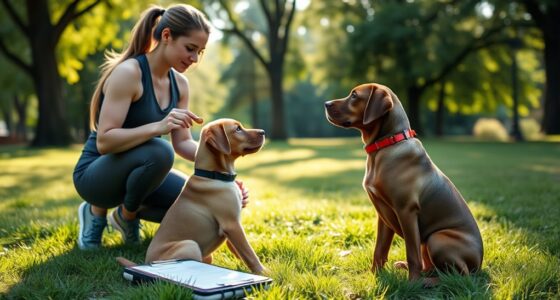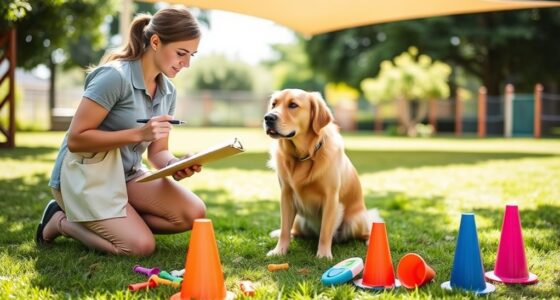If you're looking for dogs known for their incredible trainability, consider these five breeds. German Shepherds are highly intelligent and learn quickly. Border Collies excel in obedience and energy. Poodles, available in three sizes, are quick learners and social. Labrador Retrievers are friendly and receptive to commands, making training enjoyable. Finally, Australian Cattle Dogs are agile and need consistent training to thrive. Each of these breeds has unique characteristics that make them standout companions. Curious about how to bring out the best in these dogs? There's plenty more to discover about training techniques and tips.
Key Takeaways
- Border Collies are the most intelligent breed, learning commands in under five repetitions with a 95% obedience rate.
- Poodles rank high in trainability, mastering new commands quickly and enjoying active social interactions.
- German Shepherds excel in obedience and focus, making them ideal for various service roles with positive reinforcement training.
- Labrador Retrievers respond quickly to commands and require regular exercise to enhance their trainability and maintain their friendly nature.
- Australian Cattle Dogs thrive with clear leadership and positive reinforcement, learning commands swiftly while requiring vigorous exercise for optimal behavior.
German Shepherd
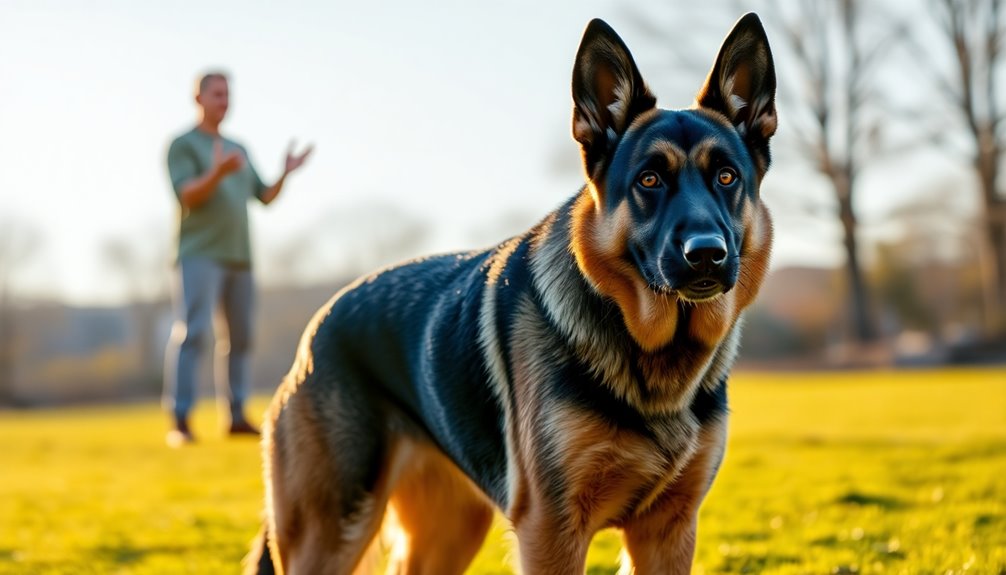
When it comes to trainable dog breeds, the German Shepherd stands out as a top contender. You'll find this breed ranks as the third most intelligent overall, able to learn a new command after just 5-10 repetitions. Often, they master commands on the first try, thanks to their high focus and strong obedience, which makes your training sessions easier and more effective.
To get the best results, aim for daily training sessions of at least 15-30 minutes, especially for puppies. Utilize positive reinforcement; this reward-based approach works wonders. Be sure to avoid punishment-based measures, as they can lead to unwanted behaviors.
Keep in mind that mental and physical stimulation is crucial for preventing boredom. In addition, German Shepherds are often utilized in various professional roles due to their versatile talents that make them ideal for tasks requiring high intelligence and adaptability.
German Shepherds excel in various roles, from service and police dogs to loyal household companions. Their innate problem-solving abilities and adaptability make them perfect for tasks like search-and-rescue or herding.
With a firm and assertive leader, they form deep bonds with their families, showcasing their loyalty and protective instincts. Overall, training a German Shepherd can be a fulfilling experience that strengthens your relationship.
Border Collie
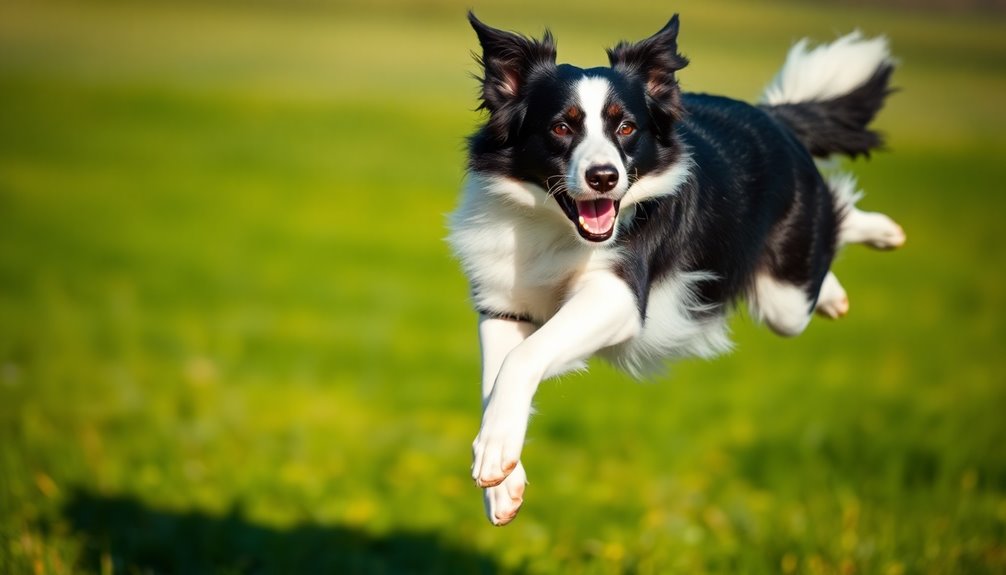
Border Collies are widely regarded as the most intelligent dog breed, making them exceptional learners and trainers. They can learn new commands in less than five repetitions and obey the first command 95% of the time or better. This impressive ability stems from their breeding for independent thinking and problem-solving.
To harness their intelligence, you'll need to provide consistent training and clear boundaries. Positive reinforcement—like praise, treats, and play—works wonders, and early socialization is crucial for exposing them to different people and environments. Engaging them in activities like agility, flyball, and obedience training will fulfill their need for both mental and physical stimulation. Aim for at least 2-3 hours of vigorous exercise daily, as they have high energy levels that necessitate a structured environment.
Keep in mind that Border Collies can develop herding instincts, so proper training is essential. Utilize redirection techniques with commands like "leave it" or "relax" to manage any herding behavior. Consistent training and socialization will help reduce their urge to herd children and other pets.
Poodle
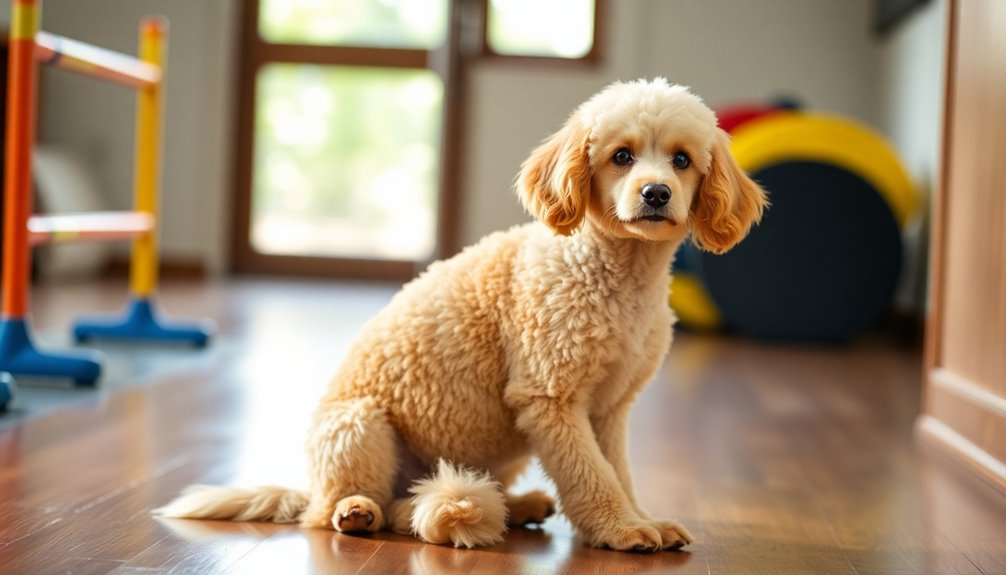
Poodles are another breed that showcases remarkable intelligence and trainability, ranking among the top in canine intelligence assessments. With Standard Poodles placed second and Miniature Poodles eighth out of 138 breeds, it's clear they're exceptionally smart. They excel in working and obedience intelligence, learning new commands with fewer than five repetitions and obeying them 95% of the time on the first try.
Their friendly, outgoing, and adaptable nature makes them great family pets. However, they require an active lifestyle due to their high energy levels. If properly socialized, they're generally good with kids and enjoy meeting new people. Poodles are also recognized for their hypoallergenic coat, making them a suitable choice for allergy sufferers.
Poodles thrive on mental and physical stimulation, needing up to an hour of exercise daily. Incorporating games and activities like agility training can keep their minds sharp and prevent boredom.
These dogs come in three sizes: Standard, Miniature, and Toy, and have a unique curly, dense coat that requires regular grooming. With a low-shedding coat, they're often suitable for those with allergies.
Labrador Retriever
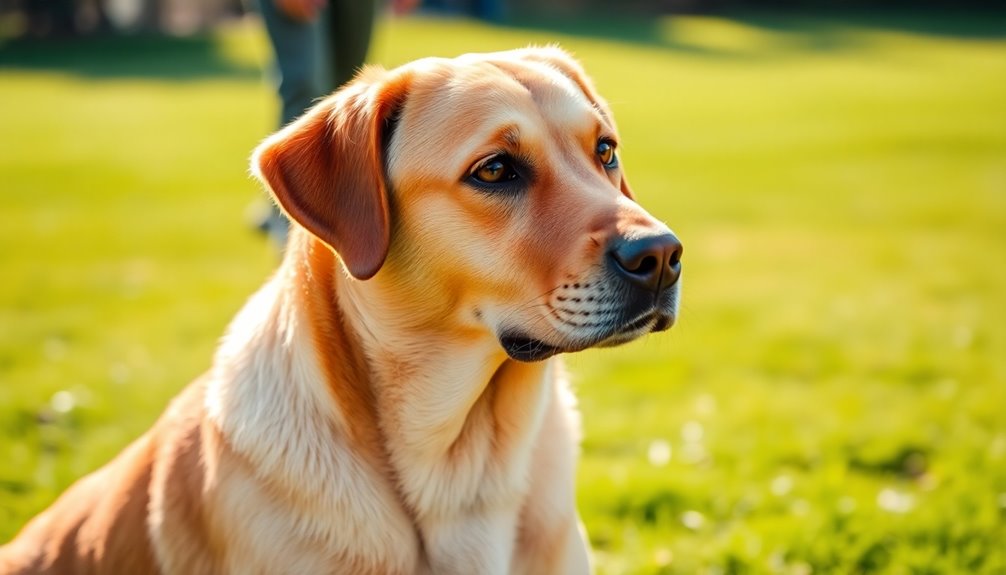
Although they may not top the charts in cognitive abilities, Labrador Retrievers are renowned for their exceptional trainability and eagerness to please. These dogs rank as the seventh best learners in the canine world, according to Stanley Coren's research.
You'll find that they grasp simple commands in less than five repetitions and reliably remember them without much need for practice. Impressively, they obey the first command about 95% of the time.
Training a Labrador is a breeze for almost anyone, as they respond quickly to commands, even from a distance. Their motivation often comes from love, treats, or play, making them eager to learn. Additionally, exercise enhances trainability in both show and working Labradors, ensuring they remain sharp and responsive.
While they may score lower in problem-solving skills compared to breeds like Border Collies, their friendly and loyal nature compensates for this shortfall.
Labradors require significant exercise—over an hour daily for adults—to channel their energy positively. Engaging them in activities like swimming or fetch can prevent destructive behaviors.
With their high energy and trainability, you'll find that Labradors not only learn quickly but also become loving companions who thrive on interaction and activity.
Australian Cattle Dog

The Australian Cattle Dog, with its keen intelligence and energetic spirit, stands out as one of the most trainable breeds in the canine world. This breed ranks high on the intelligence spectrum, learning new commands in fewer than five repetitions and obeying known commands on the first try about 85% of the time. Their sharp problem-solving skills make them adaptable and quick learners.
When training your Australian Cattle Dog, use positive reinforcement and rewards-based methods for the best results. Clicker training and the "Nothing in Life is Free" principle can be particularly effective. They need strong, consistent leadership and early socialization to curb nipping tendencies. Firm but gentle guidance will help you establish clear rules. Ongoing socialization is also important throughout their life to ensure balanced behavior.
Originally bred for herding, these dogs excel in high-impact activities like agility and frisbee, making them excellent candidates for canine sports. Their deep social intelligence allows them to pick up on your cues, forming strong bonds and often displaying protective instincts.
To keep your Cattle Dog happy and well-behaved, provide regular vigorous exercise and ensure they feel secure and valued in your home.
Frequently Asked Questions
How Do I Choose the Right Breed for Training?
When choosing the right breed for training, consider your lifestyle and preferences.
Think about energy levels, temperament, and intelligence. Breeds eager to please, like Labradors, often respond well to training.
Assess how much time you can dedicate to training and socialization, as some breeds need more mental and physical stimulation.
Research each breed's background and historical purpose to ensure they align with your training goals and lifestyle.
What Training Methods Are Most Effective for These Breeds?
When training dogs, positive reinforcement is often the most effective method. You'll want to reward desired behaviors with treats or praise to create a positive experience.
Clicker training can also help you mark specific actions clearly.
Operant conditioning combines rewards and consequences, but use it carefully to avoid negative impacts.
Lastly, relationship-based training focuses on building trust and understanding your dog's needs, enhancing the training experience for both of you.
How Long Does It Typically Take to Train These Dogs?
Training duration varies, but you can expect to spend anywhere from a few weeks to several months teaching your dog commands.
Factors like age, temperament, and prior training play significant roles. Consistent short sessions help reinforce learning, so dedicate time daily.
With positive reinforcement and patience, you'll see progress. Remember, every dog is unique, so be flexible with your expectations and adjust your approach as needed for the best results.
Can Mixed Breeds Exhibit Similar Trainability Traits?
Yes, mixed breeds can absolutely exhibit similar trainability traits as purebreds. Their diverse genetic backgrounds often lead to adaptable and intelligent companions.
Your approach to training, including the environment and methods you use, plays a crucial role in their learnability.
What Are Common Behavioral Issues in Highly Trainable Breeds?
In highly trainable breeds, you might notice common behavioral issues like hyperactivity and noise sensitivity.
These traits often stem from their high energy levels, which can lead to challenges if not managed properly.
Additionally, some breeds may exhibit herding instincts, such as nipping or chasing, making training more complex.
To mitigate these issues, ensure you provide plenty of exercise, mental stimulation, and consistent, positive reinforcement during training sessions.
Conclusion
In conclusion, if you're looking for a dog that's easy to train and eager to please, these five breeds are fantastic choices. German Shepherds, Border Collies, Poodles, Labrador Retrievers, and Australian Cattle Dogs all shine with their intelligence and adaptability. With the right approach and consistent training, you'll discover just how quickly they can learn new commands and tricks. Choosing one of these breeds can lead to a rewarding and fulfilling partnership for both of you!





